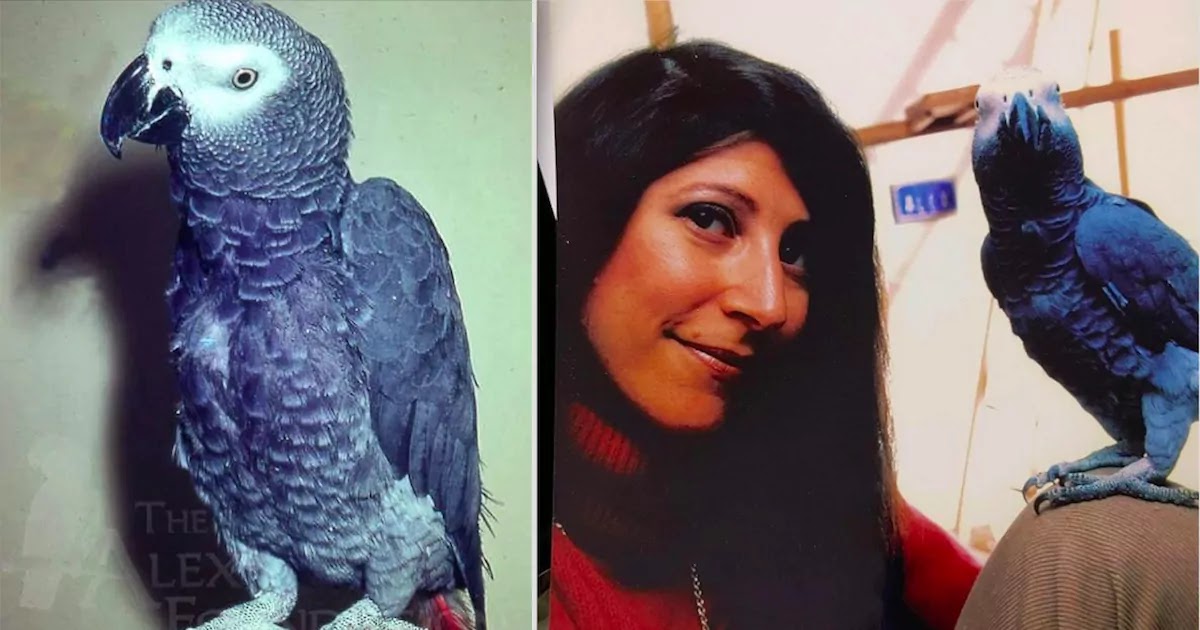Alex, the African Gray Parrot, may not quite be a household pet, but he is well known within zoology circles for being perhaps the smartest bird, and perhaps the smartest animal, to ever live. Alex was the test subject of researcher Dr. Irene Pepperberg and lived with her for over 30 years while she taught him and studied his behaviour.
By the end of Alex's life in 2007, at the age of 31, much younger than parrots normally live, it was widely believed that he had intelligence similar to or greater than dolphins and some primates, such as chimpanzees.
The training and education provided by Dr. Pepperberg began in 1977 in Chicago, 12 - 13 months after Alex's birth, and was known as the 'Avian learning experiment', designed to discover how much birds could in fact learn if given the opportunity.
Dr. Pepperberg began Alex's training using the 'model/rival technique' which involved the observation of his trainers while interacting. One of the trainers would be the 'model' of the desired behaviour, which made them Alex's rival for the other trainer's attention and reward. Often, the two trainers would switch roles so that the bird could understand the interactive process. This technique allowed the trainers to facilitate two-way communication with Alex.
As time went on, Alex became more proficient in his knowledge and, according to Dr. Pepperberg, at times, he would even correct his trainers when they made mistakes during a conversation. He would also practice words by himself and, later on, he would also assist Pepperberg in teaching other parrots in the lab through the role of model and rival.
A post shared by The Alex Foundation (@thealexfoundation)
Throughout the training, Alex was taught the words for objects, colours, shapes, and made to watch two humans having discussions and interactions to see if he could mimic and understand their behaviour. Alex could eventually name 50 different objects and could count objects in groups up to six. It is even thought that he knew and understood the abstract concept of zero.
What was particularly important about Alex's understanding of objects was that he understood 'types' of objects and not individual objects themselves. For example, he could identify a set of keys even if he had never seen that particular set of keys before. He was also able to distinguish the different properties among objects that belonged in a particular class, for example, the keys that were made of metal from the ones that were made of plastic. When he was presented with an object, he would pose questions regarding its properties in the form: 'What colour?, What matter?, What shape?'.
Alex eventually came to have such a deep understanding that he was even involved in role-play in order to train other parrots who entered the avian learning experiment.
Amazingly, eventually during the games, Alex was able to start asking his own questions in guessing games, such as what colour an object was, or what shape it was. It remains one of the only documented instances of an animal asking a question in a meaningful way that was designed to extract further information.
A post shared by The Alex Foundation (@thealexfoundation)
The night before Alex died unexpectedly he said to Dr. Pepperberg, "You be good, see you tomorrow. I love you."
Thankfully, the ground-breaking work carried out by Alex and Dr. Pepperberg has resulted in great insights into avian intelligence and intelligence in the wider animal world. The research by Dr. Pepperberg and her team continues to this day and she currently lives with two other African Gray parrots.
To find out more about Alex and Dr. Pepperberg's research, visit The Alex Foundation's website.
A post shared by The Alex Foundation (@thealexfoundation)
















COMMENTS